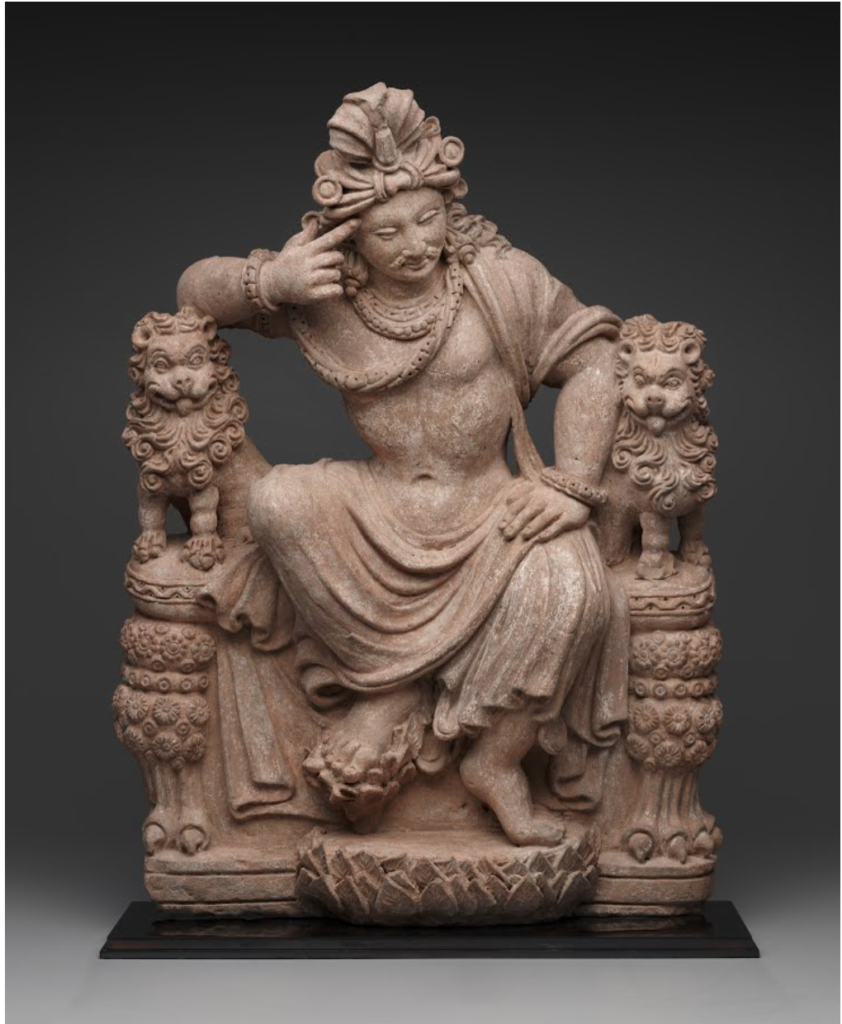
Creator: Unknown (People of the Gandharan Empire)
Date: 4th-6th century C.E.
Culture: Gandharan culture, Hadda region
Medium: Terracotta
Dimensions: Overall: 32 3/4 x 24 1/2 x 10 1/2 in. (83.19 x 62.23 x 26.67 cm)
Classification: Unknown
Credit Line: Dallas Museum of Art, Wendover Fund, gift of David T. Owsley via the Alvin and Lucy Owsley Foundation, the Cecil and Ida Green Acquisition Fund, and General Acquisitions Fund
Provenance: Hadda region
Accession Number: Unknown
_______________________________________________________
URL/References: https://artsandculture.google.com/asset/thinking-bodhisattva/6wFFH6oatMS-mw
________________________________________________________
Description:
This regally enthroned terracotta sculpture entitled, Thinking Bodhisattva, was created by the people of the Gandharan Empire around the 4th-6th century C.E. The figure depicted at the center is Prince Siddharta who at the time was the very initiator and founding father of Buddhism. Prince Siddharta unlike typical representations of the Buddha rests at his throne while he is adorned a magnificent headdress and jewels and is dressed in heavy elaborate garments which cascade elegantly. The manner in which he is seated reminds the viewer of a figure similar to a king of the heavens. This idea is significant with the Prince’s physical positioning since the people in the Hadda region believed he was meant to be situated in the Tushita heavens. Not only is it the Prince’s job to reign and take control over the heavens like a righteous royal but to also be a mentor and pupil to he deieties up above.
There is an interesting duality of nature in the celestial and earthly realm for the Buddha prince. The Prince’s ornate materiality and physical attributes derive from the “Indian earthy world” while his body and anima (soul) are part of a more celestial world.
When gazing at the Thinking Bodhisattva, we as the audience can make connections with attributes from classical antiquity. Generally the Buddha’s visage features an outward, profound gaze as his eyes are wide open and he stares directly at the viewer. The Buddha quite literally stares into our souls and bodies. This Prince on the other hand, rather than look at us, he pensively directs his face towards the ground. It doesn’t appear impolite rather it is in a way intellectual. He is pensive and sits sophisticatedly in a contrapposto like pose. Though the statue, Le Penseur (The Thinker) 1880, of the artist, Auguste Rodin, was concocted much after the Buddha, similarly Rodin was influenced by the work of antiquity along with Dante Alighieri’s work. Moreover, the throne upon which the Buddha is seated is nowhere near simplistic and minimalist but features two Persian lions. Typically lions are a symbol of political and sovereign power. In many countries or geographical regions, the lion was a national symbol, like in the region of Venice, for instance. This lion depicted in the terracotta is present to serve as a reminder of the “Lion of the Shayka Clan” and the pillars produced during the “Mauryan Dynasty (322-185 B.C.E.) by the Buddhist Emperor Ashoka (r. 279-232 B.C.E.).”
By Isabella Di Scipio